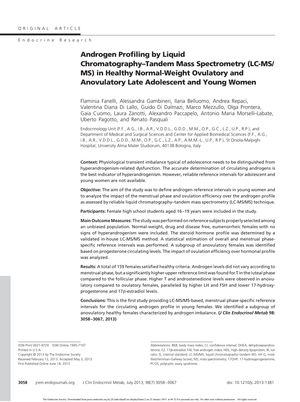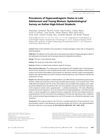Androgen Profiling by Liquid Chromatography–Tandem Mass Spectrometry in Healthy Normal-Weight Ovulatory and Anovulatory Late Adolescent and Young Women
June 2013
in “
The Journal of Clinical Endocrinology and Metabolism
”

TLDR The research found that anovulatory young women have higher androgen and hormone levels than those who ovulate, suggesting immature hormonal regulation rather than a specific condition.
The study investigated androgen levels in 159 healthy, normal-weight female high school students aged 16-19 years using liquid chromatography-tandem mass spectrometry (LC-MS/MS). It aimed to establish reference intervals for androgens based on menstrual phase and ovulation efficiency. The results showed that androgen levels were generally consistent across menstrual phases, with a slight increase in testosterone (T) during the luteal phase. Anovulatory females exhibited higher levels of T and androstenedione, as well as higher luteinizing hormone (LH) and follicle-stimulating hormone (FSH), but lower 17-hydroxyprogesterone and 17ß-estradiol compared to their ovulatory counterparts. The study provided phase-specific reference intervals for androgens and suggested that the hormonal imbalance observed in anovulatory females might be due to immature hypothalamus-pituitary-ovary axis rather than a condition like polycystic ovary syndrome (PCOS). It also highlighted the need for further research to determine if these young women are at increased risk for hyperandrogenism, metabolic issues, or infertility later in life.


